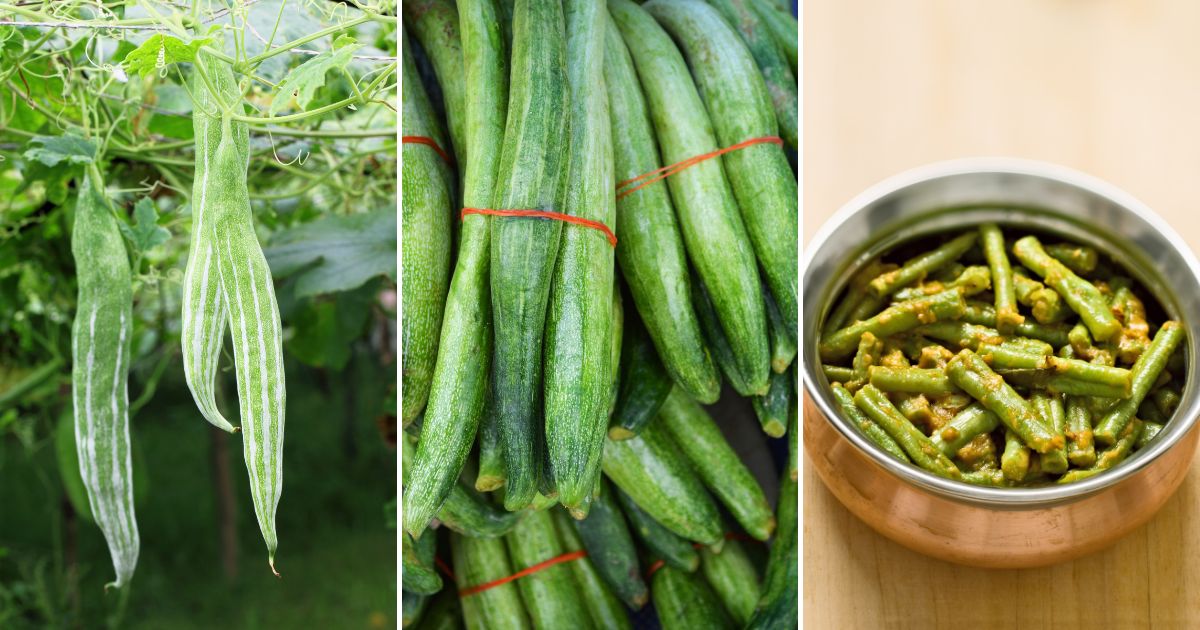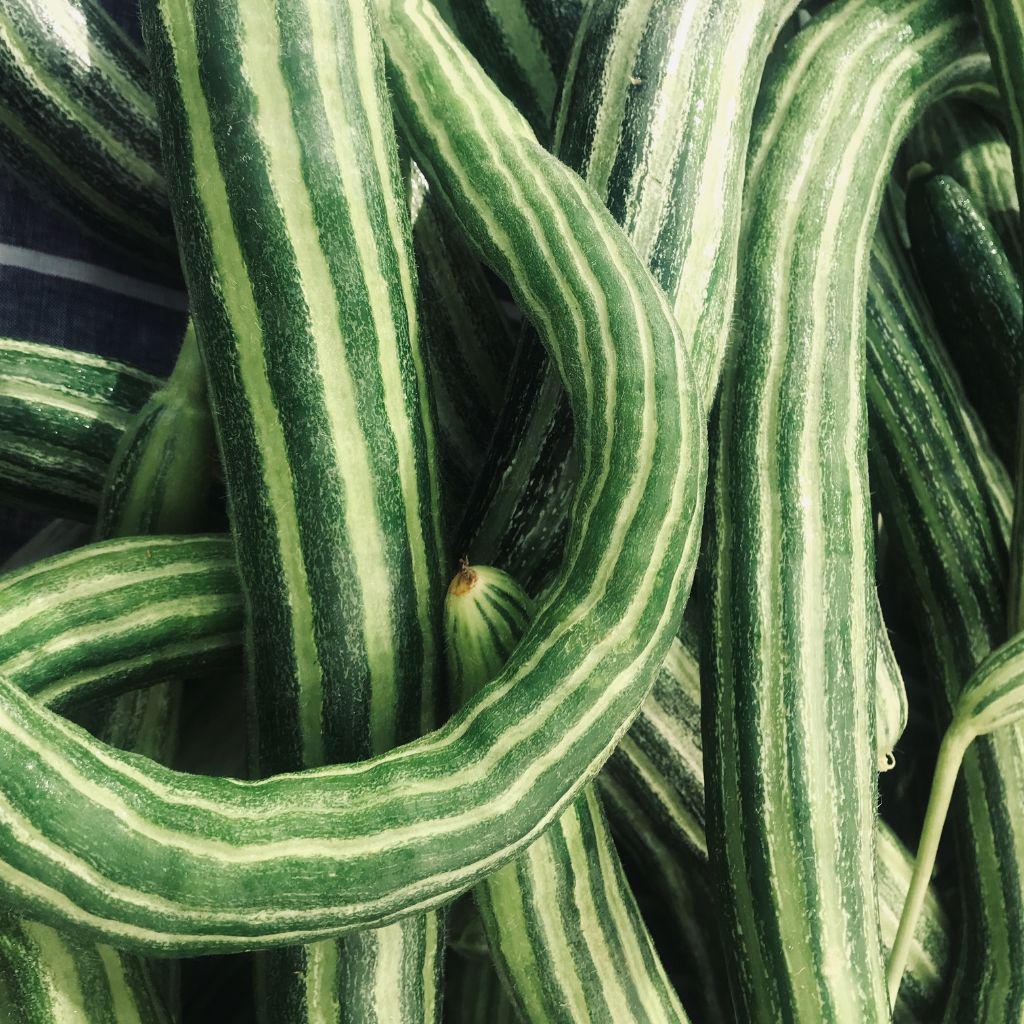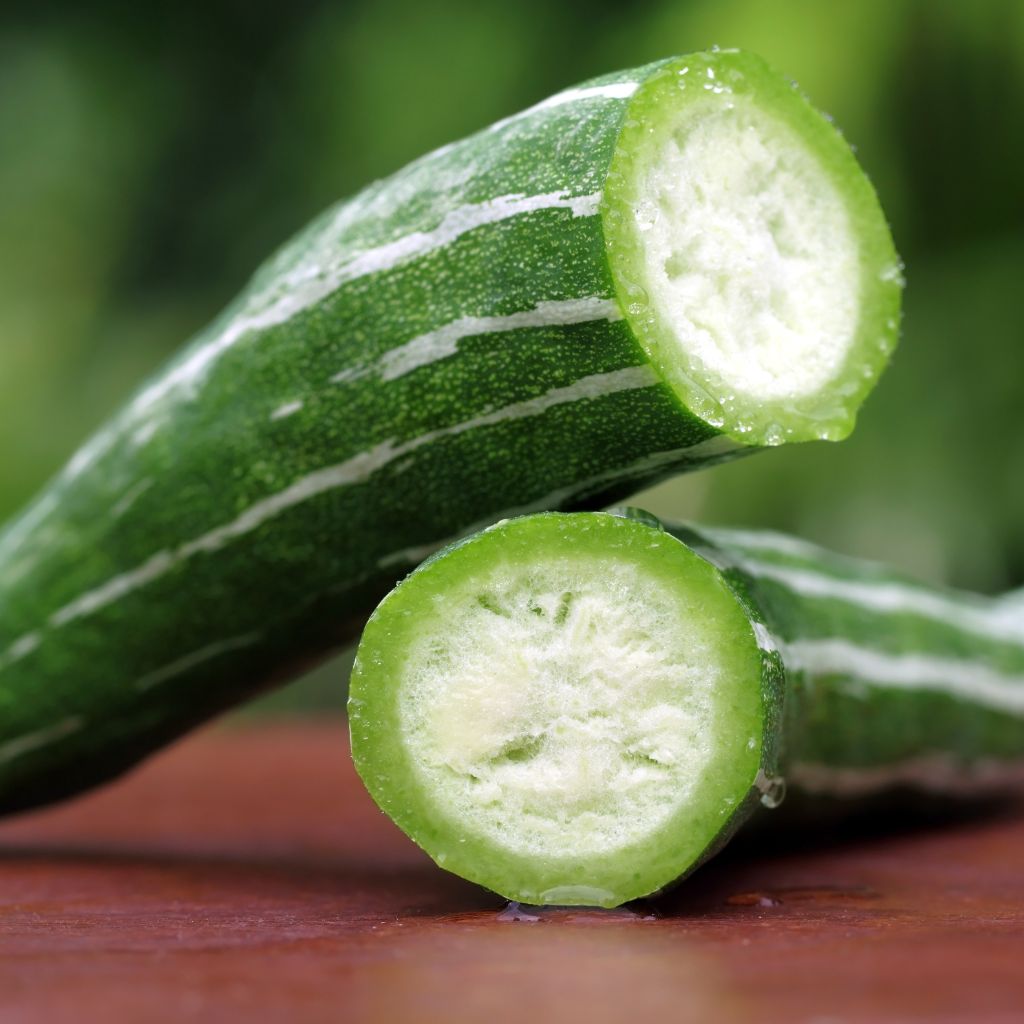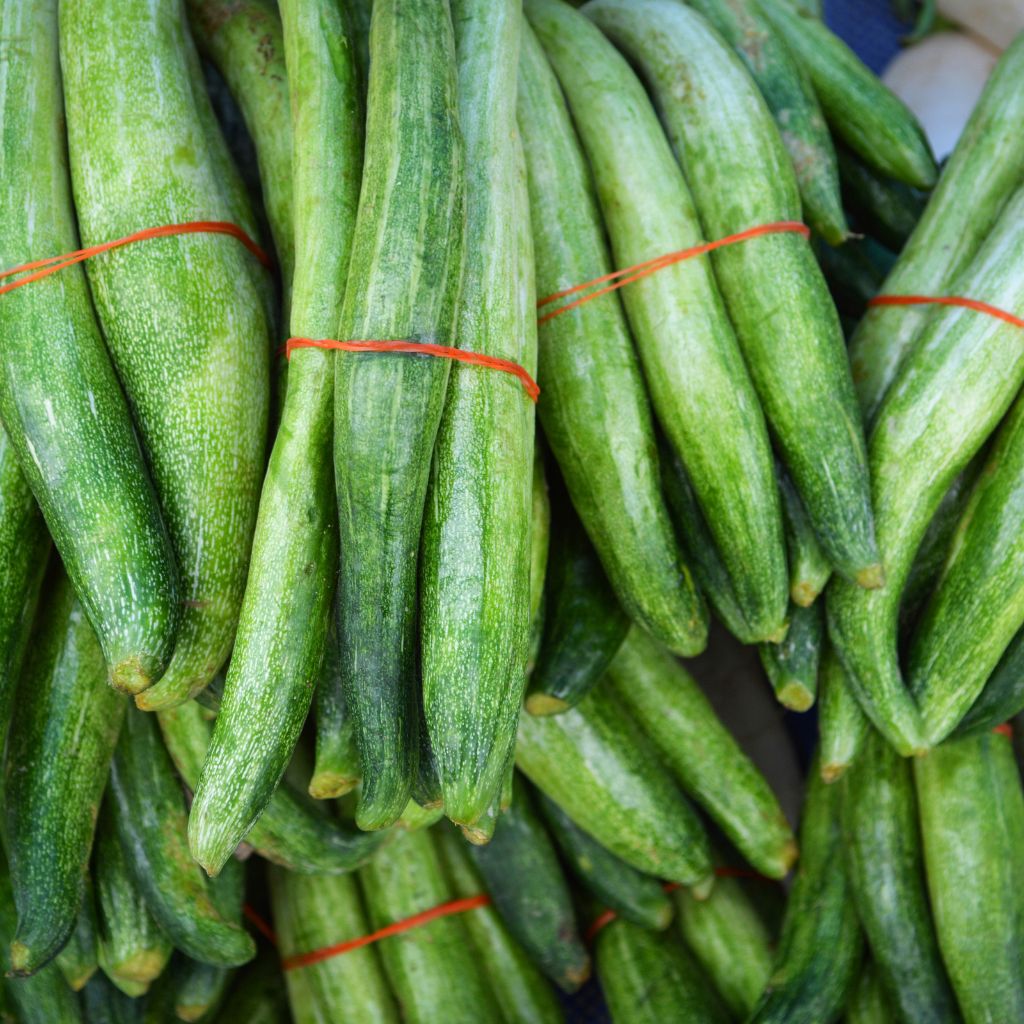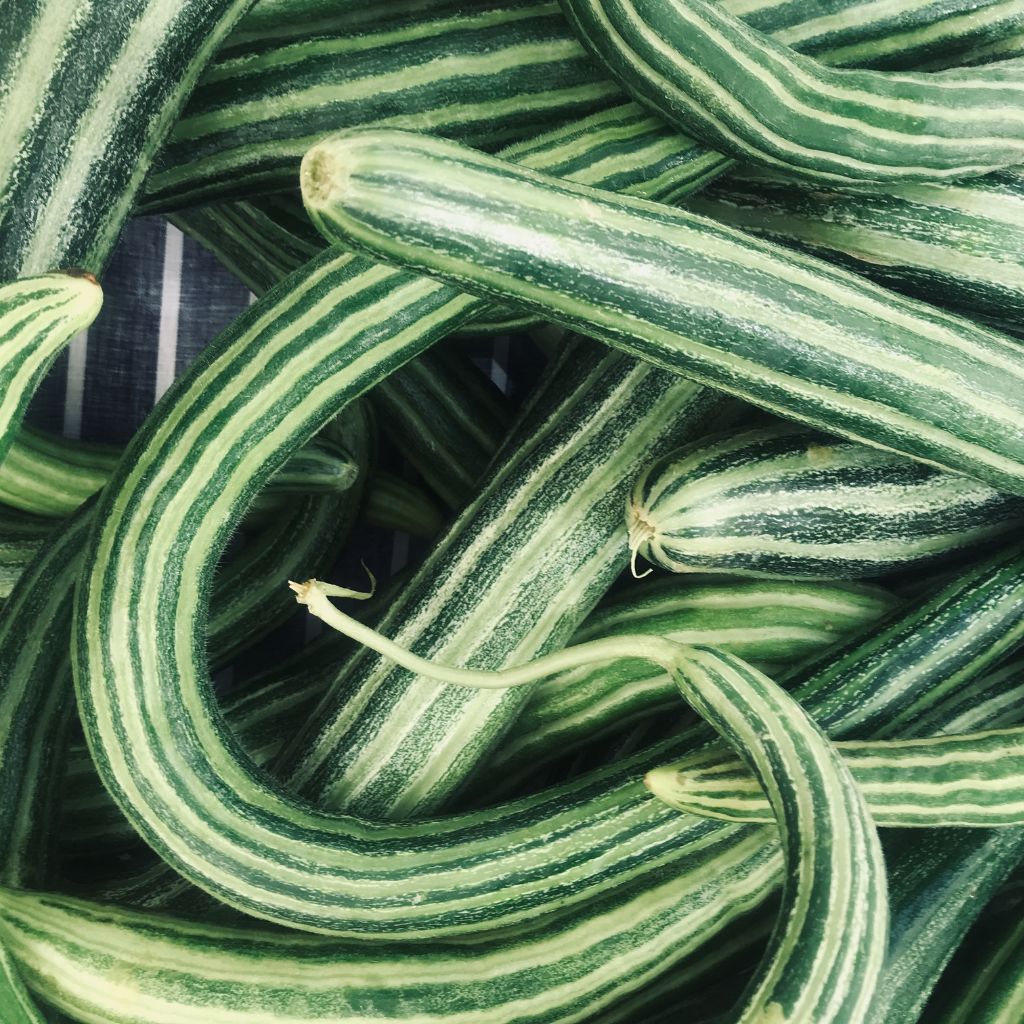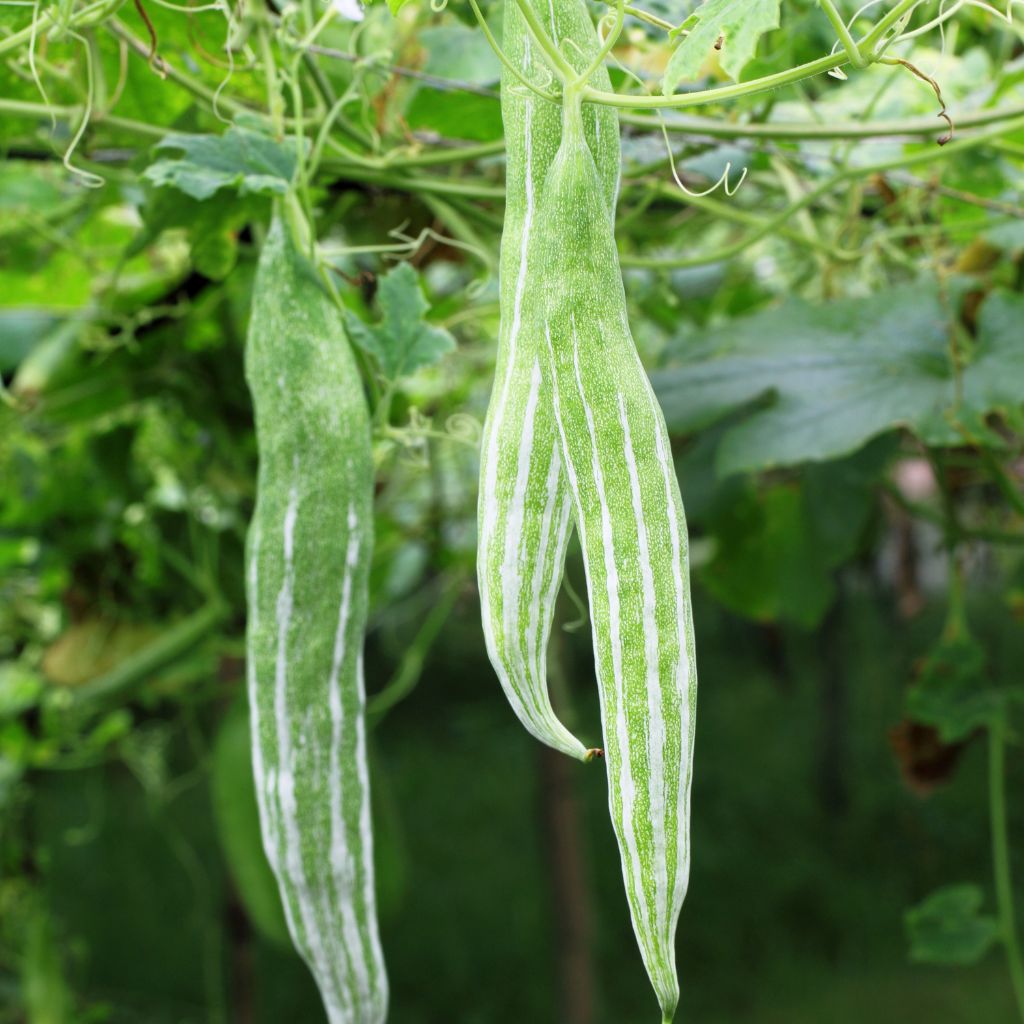Snake gourd, or Trichosanthes cucumerina, is an unusual and somewhat exotic vegetable that has been quietly earning its place in kitchens across the globe.
Also known as snake beans, serpent gourd, or padwal in parts of India, this plant has been a staple in Asian and African diets for centuries.
While it might not have the widespread fame of its cousin, the cucumber, it is quickly gaining recognition for its culinary versatility and impressive health benefits.
So why should you care about snake gourd? Simple: it’s an incredibly underrated vegetable. Not only does it offer a unique flavor, but it’s also packed with nutrients that can do wonders for your body.
Let’s dive into everything you need to know about snake gourd, from its description and flavor to its health benefits and culinary uses.
Description of Snake Gourd: Nature’s Twisting Wonder
Snake gourd gets its name from its physical appearance. When you first see it, you’ll understand why.
The vegetable grows in long, twisting shapes that often resemble serpents, hence the name “snake gourd.” These slender gourds can grow up to 1.5 meters in length, although they are usually harvested when they are much smaller.
The plant itself is a climber, meaning it needs support as it grows. In the wild, snake gourd vines cling to other plants, climbing up trellises or spreading across the ground in lush, green carpets.
Its leaves are broad, and the plant bears small white flowers that bloom at night, emitting a faint but pleasant fragrance.
The vegetable’s skin is a smooth, vibrant green that fades to a whitish hue when mature.
Inside, the flesh is soft, spongy, and pale, with seeds that are typically removed before cooking. When young, the flesh is firm and crisp, similar to a cucumber, but it softens as it ripens.
Flavor Profile: Mild Yet Distinctive
When it comes to taste, snake gourd is best described as mild but distinctive. Its flavor is reminiscent of a mix between cucumber and zucchini, with a slight hint of bitterness if it’s allowed to ripen too much.
In its younger state, the gourd has a crisp, refreshing taste that works well in salads or light stir-fries.
The flavor is subtle enough that snake gourd can absorb other seasonings and spices, making it a versatile ingredient in a variety of dishes.
Whether you want to pair it with spicy curries, tangy tamarind, or mild coconut-based sauces, snake gourd fits right in. It’s the kind of vegetable that complements the overall dish without overwhelming it.
Nutritional Benefits of Snake Gourd: A Superfood in Disguise
What really makes snake gourd stand out is its impressive nutritional profile. While it might not look like much on the surface, this vegetable is packed with vitamins, minerals, and antioxidants that can support your health in multiple ways.
Here’s a breakdown of the nutritional benefits of snake gourd:
Rich in Vitamins A and C:
Snake gourd is a great source of vitamin A, which is essential for maintaining healthy vision and skin.
Vitamin C, on the other hand, is a powerful antioxidant that supports the immune system and helps in collagen production, keeping your skin supple and radiant.
Low in Calories:
If you’re watching your weight, snake gourd is a great vegetable to include in your diet. It’s extremely low in calories, making it a great choice for those who want to stay full without packing on extra pounds.
High in Fiber:
Like many vegetables, snake gourd is rich in dietary fiber, which can help regulate digestion and keep your gut healthy. Fiber also plays a role in reducing cholesterol levels, lowering the risk of heart disease, and helping with blood sugar control.
Packed with Antioxidants:
Snake gourd contains a variety of antioxidants that help protect your body from oxidative stress and inflammation. This can reduce the risk of chronic diseases such as cancer, diabetes, and heart disease.
Supports Hydration:
Much like cucumbers, snake gourd is composed largely of water, making it a hydrating vegetable. This makes it an excellent choice for staying hydrated during hot weather or after a workout.
Good Source of Minerals:
Snake gourd contains important minerals like magnesium, calcium, and potassium, which are vital for bone health, muscle function, and maintaining electrolyte balance.
Snake Gourd for Health: More Than Just Nutrition
Beyond its nutrient content, snake gourd is also revered in traditional medicine for its various health benefits.
In Ayurveda and other traditional medicinal systems, snake gourd has been used to treat a range of ailments. Here are some of its medicinal uses:
Digestive Health:
Snake gourd has a cooling effect on the digestive system and is often used to relieve constipation, acidity, and other digestive issues. Its high water and fiber content help in promoting smooth bowel movements.
Detoxification:
It is considered a natural detoxifier that helps cleanse the body by promoting urination and removing toxins from the system.
This can be particularly beneficial for people who suffer from urinary tract infections or kidney problems.
Liver Health:
Snake gourd is believed to help improve liver function and treat conditions like jaundice. In traditional medicine, it’s often used as a remedy for liver disorders due to its ability to support detoxification.
Anti-inflammatory Properties:
Some studies suggest that snake gourd may have anti-inflammatory properties, which can help reduce inflammation in the body. This can be beneficial for those suffering from conditions like arthritis or other inflammatory diseases.
Blood Sugar Control:
Snake gourd is known to have a low glycemic index, meaning it doesn’t cause rapid spikes in blood sugar levels. This makes it a good option for people with diabetes or those looking to maintain stable blood sugar levels.
Fever Reduction:
In traditional medicine, snake gourd juice is sometimes used as a natural remedy for reducing fever. The vegetable’s cooling properties are believed to help bring down body temperature.
Culinary Uses: Versatility in the Kitchen
So, how can you use snake gourd in your cooking? The good news is that it’s a highly versatile vegetable that works in a variety of dishes.
Whether you’re making soups, stir-fries, or even curries, snake gourd can add texture and flavor without overwhelming the dish.
Here are a few ways to use snake gourd in your kitchen:
Stir-Fries:
Snake gourd works wonderfully in quick stir-fries. Slice it into thin rounds or strips, sauté it with onions, garlic, and your choice of spices, and you’ve got a delicious, healthy side dish.
It pairs well with Indian spices like cumin, mustard seeds, and turmeric, making it a popular choice in South Indian cuisine.
Curries:
In many parts of India, snake gourd is cooked in coconut-based curries or tamarind-flavored stews.
Its mild taste allows it to absorb the spices and flavors of the curry, resulting in a delicious and hearty dish. It’s commonly paired with lentils or beans for added protein.
Salads:
When eaten raw, snake gourd can add a refreshing crunch to salads. Simply slice it thinly and toss it with other vegetables, lemon juice, and a bit of salt. Its crisp texture and mild flavor make it a great addition to summer salads.
Stuffed Snake Gourd:
If you’re feeling adventurous, you can try stuffing snake gourd with a mixture of spiced vegetables, rice, or even meat.
Once stuffed, the gourd is typically steamed or baked until tender. This method allows you to get creative with the fillings and adds a fun twist to the vegetable.
Soups:
In Chinese and Southeast Asian cuisine, snake gourd is often used in soups and broths.
Its soft, spongy texture works well in light soups, adding a subtle sweetness to the dish. It’s often paired with ingredients like tofu, mushrooms, and bok choy.
Pickles and Chutneys:
In some regions, snake gourd is pickled or made into chutneys. Its mild flavor allows it to absorb the tangy, spicy flavors of the pickle, resulting in a zesty condiment that can be enjoyed with rice, bread, or grilled meats.
Snake Gourd in the Garden: Easy to Grow
If you’re interested in growing your own vegetables, snake gourd is a fantastic option for home gardeners.
It’s relatively easy to grow, provided you have a trellis or other support for its climbing vines. The plant thrives in warm, tropical climates and requires plenty of sunlight and water.
Snake gourd can be grown from seeds, which should be sown in well-drained soil. The plant typically takes a few months to mature, and the gourds can be harvested when they reach a length of about 30-40 cm.
The younger the gourd, the crisper and milder its flavor will be.
Snake gourd may not be the most popular vegetable at the grocery store, but it’s certainly worth seeking out.
With its mild flavor, impressive nutritional benefits, and versatility in the kitchen, it’s a vegetable that deserves more attention.
Whether you’re looking to improve your health, experiment with new recipes, or simply add more variety to your diet, snake gourd is a fantastic choice.
So next time you see this quirky, snake-like vegetable at your local market, don’t pass it by. Give it a try, and you might just find yourself falling in love with its subtle charm and impressive health
